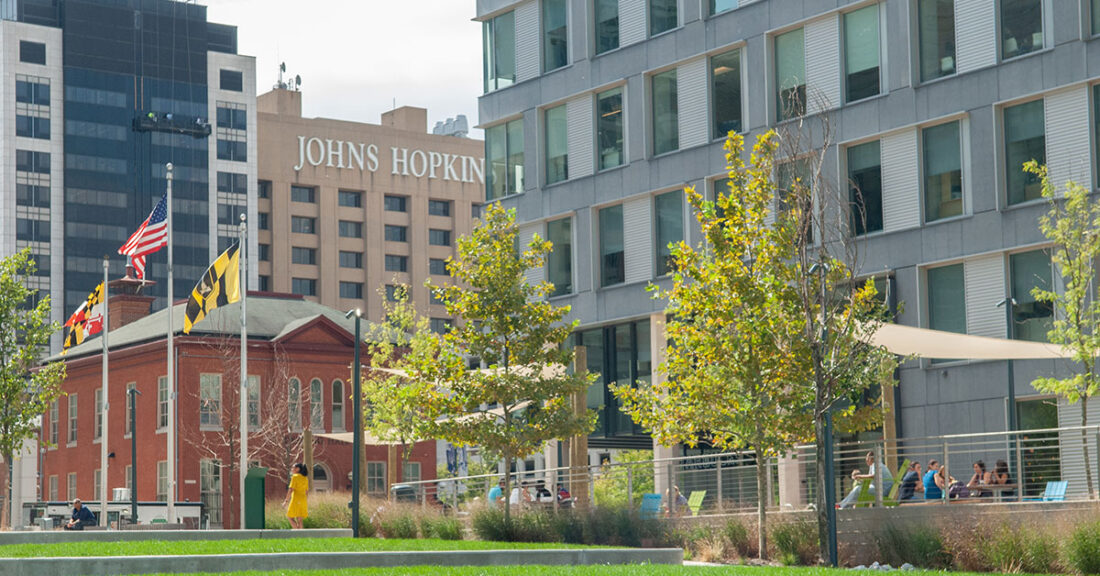Report: Investment in Baltimore Uneven by Race

Investment in Baltimore is highly concentrated in ways that reinforce historic racial and economic inequality, according to a new report from the Urban Institute funded by the Annie E. Casey Foundation. However, one major community development project has boosted capital flowing into one largely Black community in the city’s east side, according to the analysis.
Neighborhood Investment Flows Into Baltimore compares private, public and philanthropic dollars flowing into the city’s neighborhoods from 2004–2016, finding that predominantly Black communities receive far less investment than neighborhoods that are largely white.
The findings are similar to those released in a 2019 Urban Institute report, The Black Butterfly, which analyzed city investment data over five years. Both reports note that Baltimore’s disparities in investment can be traced to century-old policies that confined Black residents to less desirable neighborhoods, including racial housing covenants and redlining practices.
“With less access to capital, Baltimore’s Black residents are stifled in their abilities to become entrepreneurs and homeowners, which limits their opportunities to build wealth and assets,” says Kimberly Spring, director of research and evaluation at the Casey Foundation. “This situation acts to reinforce racial segregation and inequality and affects the resources and amenities available to Black communities.”
From 2004–2016, households in neighborhoods where residents are predominantly white received, on average, three times more investment per year than those in communities that were more than 85 percent Black — or $26,500 per household compared to $8,160, according to the report.
Broken down over that same period, per household, majority white neighborhoods received each year:
- seven times more in small business loans than did largely Black communities;
- four times more in commercial real-estate loans;
- three times more investment in construction, demolition and property rehabilitation; and
- two times the amount for loans for multifamily houses and three times as much for single-family homes.
Though public spending and mission-driven lending are spread much more equitably across the city, they represent just a fraction of overall investment — indicating a need for greater government and philanthropic commitments to help spur larger flows of capital into Black communities, the report says.
“We hope that leaders in Baltimore’s private, public and philanthropic sectors take these findings seriously,” says Talib Horne, director of Casey’s Baltimore Civic Site. “Greater commitments are needed from each sector to ensure that equitable investment can be achieved.”
Horne adds: “The current public health crisis and the economic hardships it’s produced only make this a more urgent priority.”
East Baltimore project boosts investment
The report also breaks down investment related to the East Baltimore Development Initiative. The ongoing project, which Casey supports, launched in the early 2000s and was meant to transform a distressed, largely Black area north of the Johns Hopkins Medical Campus into a vibrant, mixed-income community with safe, affordable housing, job opportunities and other amenities.
The 88-acre project area has received more than $1 billion in overall investment from multiple sources and for various purposes, the report notes. Among other things, that includes:
- $385 million for the development of health, research and academic facilities, such as lab space for the Maryland Department of Health and a 278,000-square-foot life sciences research building affiliated with the Johns Hopkins Medical Campus;
- $121 million in infrastructure, parking and public spaces and parks, including Eager Park, a 5.5‑acre, three-block-long green space with a pavilion, amphitheater and playground;
- $81 million for single-family houses and rental units, with approximately two-thirds being affordable housing and the remaining market-rate; and
- $57 million for Henderson-Hopkins, a new K–8 community school and its early childhood education center.
Because of the new development, the area has seen far more investment than other city communities in construction, rehabilitation and demolition activities, as well as commercial real-estate lending, public sector investment and mission-driven loans. Still, the report notes that lending for small businesses and single-family homes lags behind other areas of the city — a sign that larger investments have yet to produce wider economic opportunities to sustain a mixed-income community.
“The East Baltimore Development Initiative has had many bright spots and we hope that further opportunities are presented to give community residents in and around the project area the ability to thrive and build family and community wealth,” says Thomasina Hiers, vice president of Casey’s Center for Civic Sites and Community Change. “Through this project, we’ve learned much about the complexities involved in spurring large-scale, placed-based community change — and we believe policymakers, private investors and philanthropic funders across the nation can also learn from the initiative’s history.”
Learn more about investments related to the East Baltimore Revitalization Initiative






